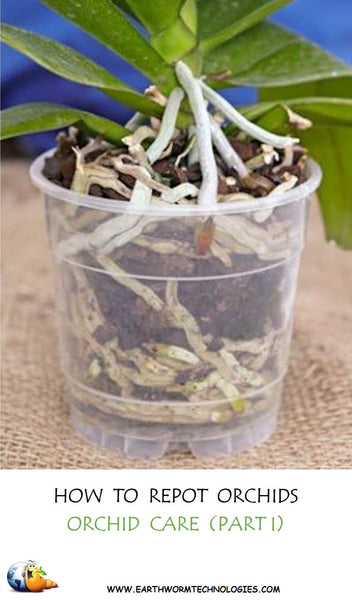Your Cart is Empty
FREE U.S. SHIPPING / NEW CUSTOMER 10% OFF, Use ECOLOVE

Repotting Orchids is an important task you want to learn because sooner or later you will find that your Orchid isn't looking so well or worse, has stopped blooming. As we mentioned in our introduction to our Orchid Care 101 Guide, caring for Orchids over the years can be a tricky and sometimes intimidating task but once you get to know the nuances of your Orchid, you'll find these tasks easier to complete.
One such task is the necessary evil of repotting Orchids when the time is right. Many articles that we have come across mention a loose guideline for repotting your Orchids every year or two, but the fact is that it really depends on the state of your Orchid. We never suggest to repot a plant just for the sake of repotting. Learn to analyze the signs of neglect in your plants and then go from there. In this posting, we will give you some things to look out for in deciding whether it's time to repot your Orchid or not.
The condition of your Orchid will vary primarily depending on 1) the Orchid's environment and 2) the Orchid's nutritional elements. Two factors that make up the Orchid growing environment is its surrounding climate and the potting medium in which the roots grow. You need to maintain a proper root zone for your Orchid because this is where all the magic happens (and actually where the magic happens for all your plants and flowers, hence the reason we always stress feeding organic nutrients into your plant root zones for continual optimal growth and plant health).
Your Orchid will not grow well if:
Making sure your Orchid is happy in its container with the right factors taken care of will help it to thrive so you can also be happy! :)

It's actually not as intimidating as it sounds. Just remember, try to repot your Orchid after it has already bloomed. Typically, flowers and plants build up a store of energy from sunlight, soil nutrients & water in advance of the blooming season so they can flower. After they are done blooming, flowers & plants will enter a resting period. It is during this time that you want to ideally perform tasks such as repotting and/or trimming back old leaves and flower petals. The same goes for timing the repotting of your Orchids.


Vermicompost (composted wood or food waste mixed with worm castings) & worm castings (defined as pure worm castings refined to 1/8" of an inch and much more concentrated & beneficial than vermicompost in the organic gard...

How to care for Orchids the Earthworm Technologies way will be the topic for discussion this time! In other words EASILY AND ORGANICALLY because after all that is one of our mantras!
If you’ve been following us for a while or bought our organic gardening plant food products you know that we like to interact with our customers as well as other gardeners, writers and pretty much anyone interested in gardening. This past season...